
by DGR News Service | Nov 25, 2020 | Direct Action, Mining & Drilling
The women of Kendeng set their feet in cement to stop a mine in their lands. This is their story.
This article was written by Febriana Firdaus on 13 November 2020 and published originally on Mongabay.
- Across Indonesia, hundreds of communities are in conflict with companies seeking control of their resources. In some cases, the resistance has been led by women.
- Journalist Febriana Firdaus traveled across the country to meet grassroots female activists and delve into the stories behind their struggles.
- This article is part one of a series about her journey, which has also been made into a film, Our Mothers’ Land.
Serene, prosperous, fertile. These words come to mind as I stand at the top of a hill in Tegaldowo village, on the island of Java, in Indonesia, one Sunday evening in 2019. It is an idiom used to describe this giant island, with its rich soils, verdant rice paddies and teak forests. But the tranquility hides a more turbulent story.
Across Indonesia, the world’s third largest democracy, mass demonstrations have erupted. Some 3,000 kilometers (1,864 miles) to the east, anger at decades of mistreatment of indigenous Papuans has spilled over into violence. In the capital, Jakarta, students are taking to the streets in their thousands, protesting against a raft of new laws many fear will erode civil liberties.
Among the most contentious features of the new legislation is concern that it will enable the government to criminalize farmers and activists fighting against extractive companies taking their land. Already, hundreds of communities are locked in simmering conflicts with firms that have logged their forests, mined their mountains, and transformed their farmland into plantations. Many of these people once hoped that the president, Joko Widodo, would tip the scales in the favor of the powerless.
But in the coming months those hopes will be dashed. By November 2020, the government will sign into effect sweeping new legislation that appears to entrench the power of oligarchs, and of the private firms responsible for damaging the nation’s environment, including its vast rainforests.
For many communities engaged in the fight to protect land rights and the environment, the hills in which I stand hold huge resonance.
It is not just a hill, but a karst: a limestone formation that undergirds the North Kendeng Mountains and stretches 180 kilometers (112 miles) east to west. The rock has been eroded over time to form a giant warren of underground caves and rivers, providing clean water to the people of the region throughout the year.
The Indigenous people of Kendeng consider the karst to be their Ibu Bumi — their Mother Earth. She nurtures and even breastfeeds the land, in their lore, allowing them to grow rice and other crops.
“Mother Earth has given, Mother Earth has been hurt, Mother Earth will seek justice,” sings Sukinah, a farmer who accompanies me as she patiently checks the corn in the field that surrounds us. She moves nimbly, dressed in slippers and a traditional Javanese blouse called a kebaya.
You can read the full article here:
https://news.mongabay.com/2020/11/the-women-of-kendeng-set-their-feet-in-cement-to-stop-a-mine-in-their-lands-this-is-their-story/
This article was co-produced with The Gecko Project. Read part two of the series here.
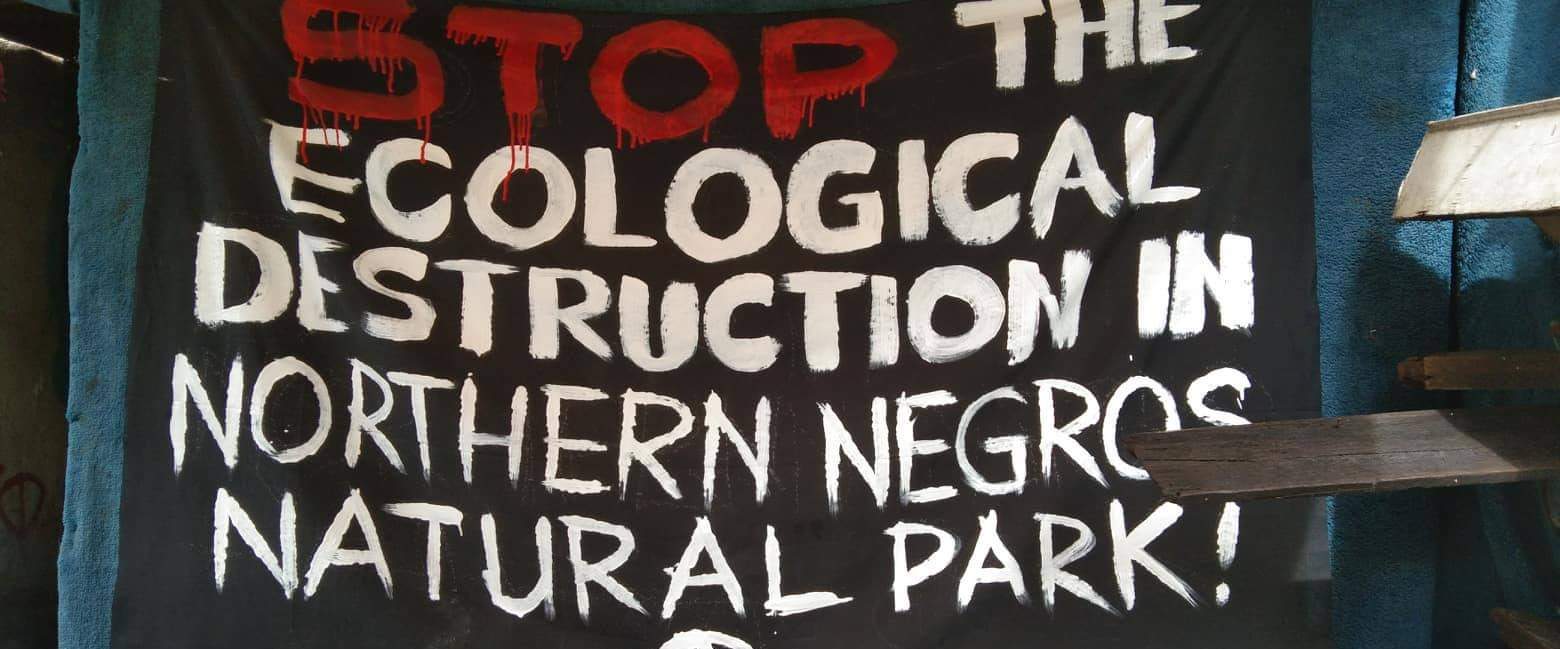
by DGR News Service | Nov 13, 2020 | Biodiversity & Habitat Destruction
This article is based on communication from a comrade in the Negros province of the Philippines. There is ongoing destruction of the natural world in this area due to road construction, a planned airport, and clearing of the rainforest. The people on the front lines, being most affected, are calling for international solidarity and support.
On October the 18th this year, the first direct action regarding the Northern Negros National Park was taken by a group of concerned people. Food Not Bombs Bacolod Volunteers and concerned citizens have started a campaign to raise awareness about the ongoing destruction of the rainforest in the Negros area of the Philippines. The group has begun disseminating information to ensure other know about the ongoing harm being caused and to stand firmly IN SOLIDARITY WITH THE FOREST.
The group, focused their work in the city of Bacolod distributing printed placards, information flyers & leaflets and have been clear they are in direct opposition to any act of destruction. Food Not Bombs Bacolod condemns these injustices and the actions of the Local Government of Negros Island which sanctions the destruction of the remaining rainforest of the island.
About Northern Negros National Park
The Northern Negros Natural Park is a protected area of the Philippines located in the northern mountainous forest region of the island of Negros in the Visayas. It is spread over five municipalities and six cities in the province of Negros Occidental and is the province’s largest watershed and water source for seventeen municipalities and cities including the Bacolod metropolitan area.
The park belongs to the Negros–Panay Biogeographic Region. It is one of two remaining lowland forests on Negros island, the other being in the Dumaguete watershed area in Mount Talinis on the southern end of the island in Negros Oriental.
The park is a habitat to important fauna including the Visayan spotted deer, Visayan warty pig, Philippine naked-backed fruit bat, and the endangered Negros shrew.
Number of endemic and threatened species of birds have been documented in the park, which includes the Visayan hornbill, Negros bleeding-heart, white-winged cuckooshrike, flame-templed babbler, white-throated jungle flycatcher, Visayan flowerpecker and green-faced parrotfinch.
Flora documented within the park include hardwood tree species (Dipterocarps), as well as palms, orchids, herbs and trees with medicinal value. Very rare is the local species of the cycas tree (locally called pitogo), probably a Cycas vespertilio, considered living fossil from the times of dinosaurs. Another prehistoric flora is present in the park like the tree ferns and the also protected Agathis philippinensis, (locally known as almaciga).
While We Were Distracted
As we know during 2020 most nations have been preoccupied trying to survive lockdown. During this time the local government of Negros Island, Protection And Management Board, Department of Environment and Natural Resources (DENR) failed in its responsibilities to protect the remaining watershed and rainforest. Road construction on the island started in the midst of Global Pandemic.
Instead the DENR legitimized the road construction on the Island and in doing so has increased the likelihood of communities on the island being destroyed in the medium to long term. The DENR, along with the Department of Public Works and the Department of Highways have acted in a way that swept aside the needs of local communities, that ignored the rights of the natural world and in doing so have colluded to strengthen their power. In short they have become the mechanism and tool of destruction for the island.
The Aerotroplis Project
The plans to build a new International Airport in Manila has also hit the radar of environmental activists. The people and environmental groups in Bulakan and Bulacan have shared concerns about the devastation this will cause to the natural world, to wildlife (including fish) populations, bird populations, air pollution, and airplanes flying in the sky. As always the focus is on economic benefits rather than the health of planet or people. There has been little or no analysis of the environmental impact.
Leon Dulce, national coordinator of Kalikasan-People’s Network for the Environment (Kalikasan-PNE), told the BusinessMirror that the presence of the bird populations are bioindicators of good ecological health. He stated “This is of crucial importance in these times when there are multiple epidemiological risks from pandemics, socioeconomic loss, and climate emergency all emerging from the disrupted environment. Massive land-reclamation activities in Manila Bay threatens the last remaining wetlands where migratory birds roost. The Bulacan Aerotropolis is one of the biggest threats that will destroy 2,500 hectares of mangroves and fisheries. It is outrageous that transportation mega infrastructure is being touted for economic recovery when global transportation is expected to remain disrupted until 2021.”
Critical Mass Ride
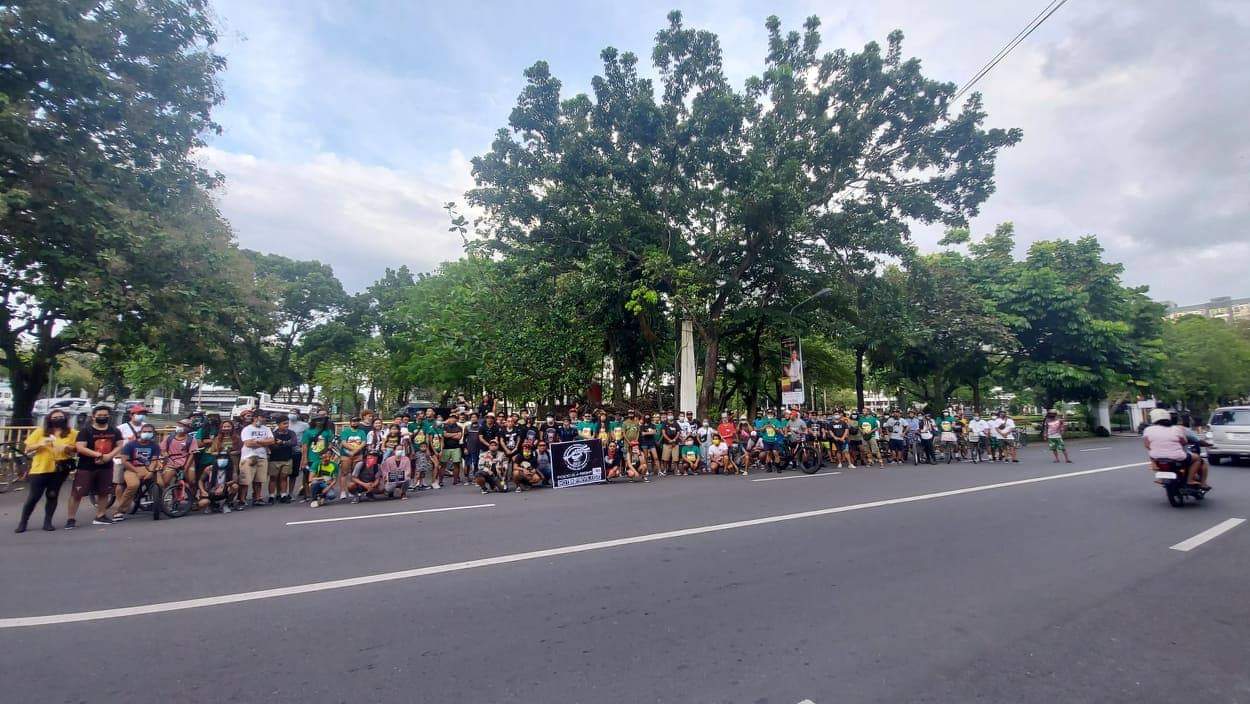 Following the actions from Food Not Bombs Bacolad, on November 8th Local Autonomous Networks held a discussion to consider the ongoing problem. They agreed to organize a coordinated Critical Mass Ride. The ride involved concerned people in the Archipelago from the different islands of the Philippines gathering to travel around the main city to raise awareness.
Following the actions from Food Not Bombs Bacolad, on November 8th Local Autonomous Networks held a discussion to consider the ongoing problem. They agreed to organize a coordinated Critical Mass Ride. The ride involved concerned people in the Archipelago from the different islands of the Philippines gathering to travel around the main city to raise awareness.
Food Not Bombs and Local Autonomous Networks have issued a call to action to support them in opposing the road construction and the subsequent destruction of the Rainforest that will kill the livelihood of hundreds of families.
The call to action in the Archipelago is just a start. They have been clear they will not stop nor be silenced until the destruction planned has been stopped. They are calling for International Solidarity to all readers.
Join The Resistance. Join The Fight!
Save the Remaining Forest & Watershed of Northern Negros Natural Park, Stop the Patag-Silay-Calatrava-Cadiz Road Construction. STOP the Bulacan Aerotropolis Project.
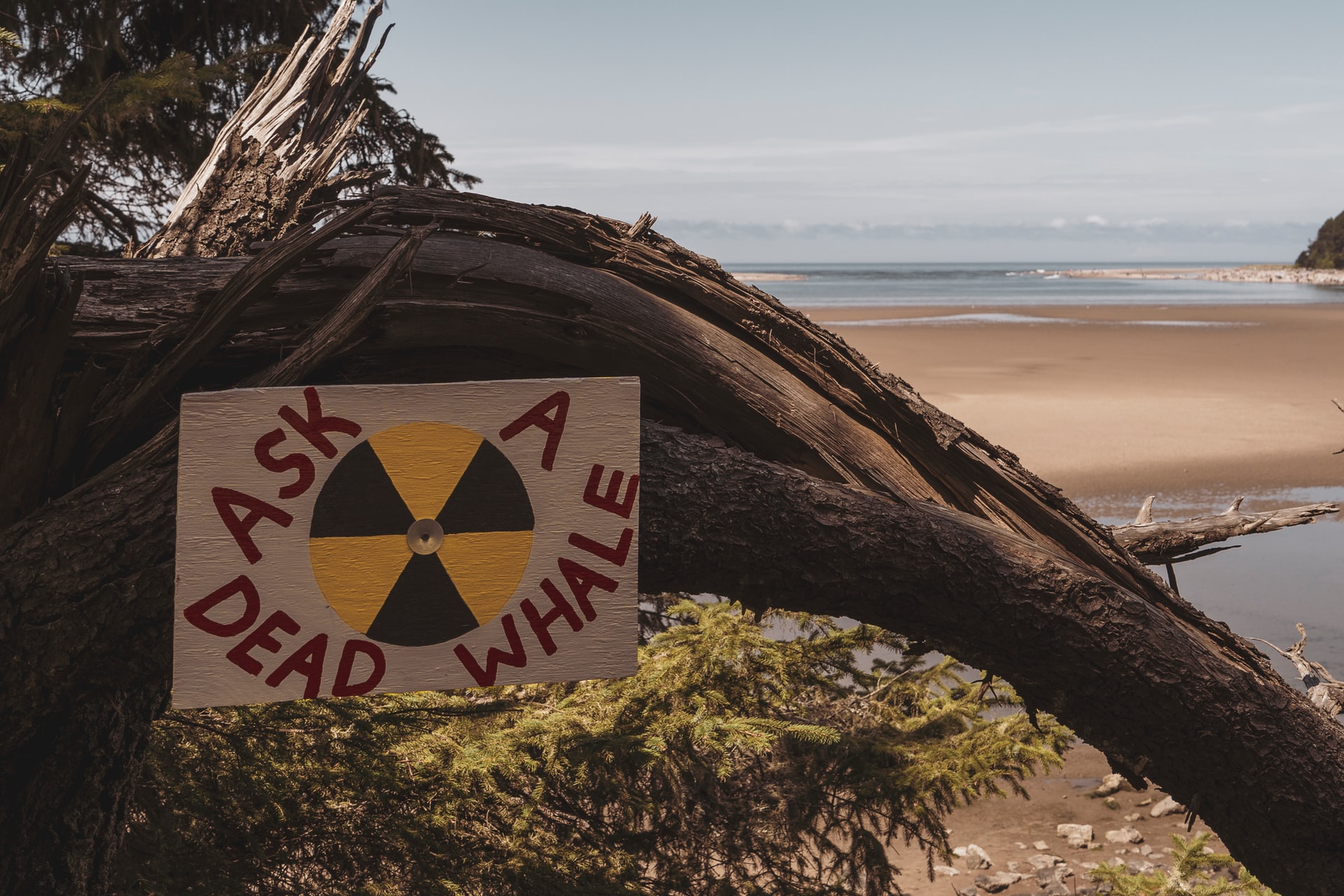
by DGR News Service | Nov 7, 2020 | Toxification
In this article, Robert Hunzinker writes about the current situation regarding the Fukushima Daiichi Nuclear Power Plant accident which has led to the spillage of radioactive water into the Pacific Ocean and also water containment issues with worrisome consequences.
By Robert Hunzinker / Counterpunch.
For nearly a decade the crippled Fukushima Daiichi Nuclear Power Plant has been streaming radioactive water into the Pacific Ocean. As it happens, TEPCO (Tokyo Electric Power Co.) struggles to control it. Yet, the bulk of the radioactive water is stored in more than 1,000 water tanks.
Assuredly, Japan’s government has made an informal decision to dump Fukushima Daiichi’s radioactive water into the Pacific Ocean. A formal announcement could come as early as this year. Currently, 1.2 million tonnes of radioactive water is stored.
The problem: TEPCO is running out of storage space.
Government of Japan’s solution: Dump it into the Pacific Ocean.
Third-party expert solutions: Build more storage tanks.
Environmental groups insist there is no reason why additional storage tanks cannot be constructed outside the perimeter of the plant. They accuse the government of seeking the cheapest and quickest solution to the problem. All along, authorities have promised the site will be safe in 40 years. Really, only 40 years!
According to IAEA’s Director General Grossi, who visited Fukushima in February 2020, dumping radioactive water that is mainly contaminated with tritium meets global standards of practice.
In that regard, advocates of nuclear power utilize a subtle storyline that convinces, and deceives, the public into accepting nuclear power, however reluctantly. It goes something like this: “There’s nothing to worry about. Nuclear power plants routinely release tritium into the air and water. There is no economically feasible way to remove it. It’s normal, a standard operating procedure.” Nevertheless, as shall be explained in more detail forthwith, there is nothing positive about that posture, absolutely nothing!
According to TEPCO, all radioactive isotopes will be removed, except tritium, which is hard to separate. Still, similar to all radioactive substances, tritium is a carcinogen (causes cancer), a mutagen (causes genetic mutation), and a teratogen (causes malformation of an embryo).
The good news: Tritium is relatively weak beta radiation and does not have enough energy to penetrate human skin. The principal health risks are ingesting or breathing the tritium.
TEPCO has deployed an Advanced Liquid Processing System that purportedly removes 62 isotopes from the water, all except tritium, which is radioactive hydrogen and cannot easily be filtered out of water.
However, the filtration system has been plagued by malfunctions. According to Greenpeace International, within the past two years TEPCO admitted to failures to reduce radioactivity to levels below regulatory limits in more than 80% of the storage tanks. Reported levels of Strontium-90 (a deadly isotope) were more than 100 times regulatory standards with some tanks at 20,000 times:
“They have deliberately held back for years detailed information on the radioactive material in the contaminated water. They have failed to explain to the citizens of Fukushima, wider Japan and to neighboring countries such as S. Korea and China that the contaminated water to be dumped into the Pacific Ocean contains dangerous levels of carbon-14. These, together with other radionuclides in the water will remain hazardous for thousands of years with the potential to cause genetic damage. It’s one more reason why these plans have to be abandoned.”
Cancer is the main risk to humans ingesting tritium. When tritium decays it emits a low-energy electron (roughly 18,000 electron volts) that escapes and slams into DNA, a ribosome or some other biologically important molecule. And, unlike other radionuclides, tritium is usually part of water, so it ends up in all parts of the body and therefore, in theory, can promote any kind of cancer. But that also helps reduce the risk because tritiated water is typically excreted in less than a month. (Source: Is Radioactive Hydrogen in Drinking Water a Cancer Threat, Scientific American, Feb. 7, 2014)
Some evidence suggests beta particles emitted by tritium are more effective at causing cancer than the high-energy radiation such as gamma rays. Low-energy electrons produce a greater impact because it doesn’t have the energy to spread its impact. At the end of its atomic-scale trip it delivers most of its ionizing energy in one relatively confined track rather than shedding energy all along its path like a higher-energy particle. This is known as “density of ionization.” As such, scientists say any amount of radiation poses a health risk.
You can read the full article here.
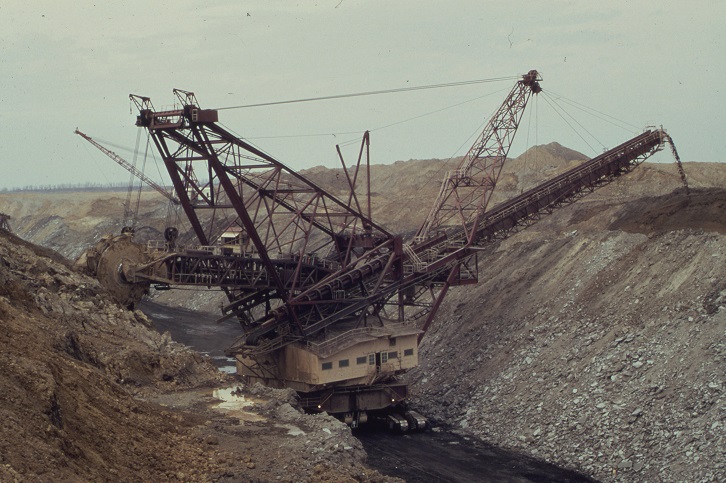
by DGR News Service | Oct 29, 2020 | Mining & Drilling
The article was written by Bong S. Sarmiento and published by Mongabay on 19 October 2020. Sarmiento describes the impact of a court decision to uphold a ban on a particularly destructive form of mining.
- A court has upheld a ban on open-pit mining in the Philippine province of South Cotabato, home to the largest known untapped deposits of copper and gold in Southeast Asia.
- The ruling is the latest setback for Sagittarius Mines, Inc. (SMI), which holds the mining permit, coming on the heels of the municipality where the deposits are located scrapping its development permit in August.
- Supporters of SMI lodged a petition in January 2019 seeking an injunction against the mining ban that has been in place since 2010.
- But the court ruled the ban is consistent with prevailing laws and regulations, including the Philippine Constitution, in a decision widely hailed by environmental, religious and Indigenous rights advocates.
SOUTH COTABATO, Philippines — A court in the Philippines has dealt another setback to the company looking to mine Southeast Asia’s largest untapped deposits of copper and gold, ruling to uphold a ban on the type of destructive mining being proposed.
In its Oct. 12 ruling, the court in South Cotabato province dismissed a petition for an injunction against the ban on open-pit mining that has been in effect in the province for the past 10 years. Sagittarius Mines, Inc. (SMI), the developer of the planned mine in the South Cotabato town of Tampakan, was not a petitioner in the case.
The ruling comes two months after councilors in Tampakan, where the deposits are located, terminated the town’s municipal principal agreement (MPA) with SMI. The agreement, governing the development of the proposed mine, laid out the rental rates for the land under the Indigenous Blaan communities, among the company’s other financial and social obligations.
In its Aug. 10 resolution, the municipal council announced it was no longer interested in reviewing or updating the 2009 MPA with the company, but was still open to creating or formulating a new agreement, which meant SMI could still pursue the $5.9 billion Tampakan project under a new municipal agreement.
But the recent court ruling makes that prospect less likely. It comes in response to a petition lodged in January 2019 by pro-mining groups seeking to rescind the ban on open-pit mining that’s been enshrined in South Cotabato’s environmental code since 2010. SMI had acknowledged before the ban was imposed that the most viable way to get at the copper and gold reserves in Tampakan would be through open-pit mining. Despite being awarded its permit in 1995, the company but has never begun operations.
The dismissed petition was filed by the original Tampakan concession holders from the 1980s, SouthCot Mining Corp. and Tampakan Mining Corp., along with the government-recognized “Indigenous cultural communities” of Bongmal, Danlag and Fulo Bato. The latter are not necessarily the formal leadership structures as recognized by the Indigenous communities. Another petitioner is Kiblawan CADT-26, the titled holder of a certificate of ancestral domain for part of the land that the project would occupy.
Featured image: Creative Commons
You can read the full article here.
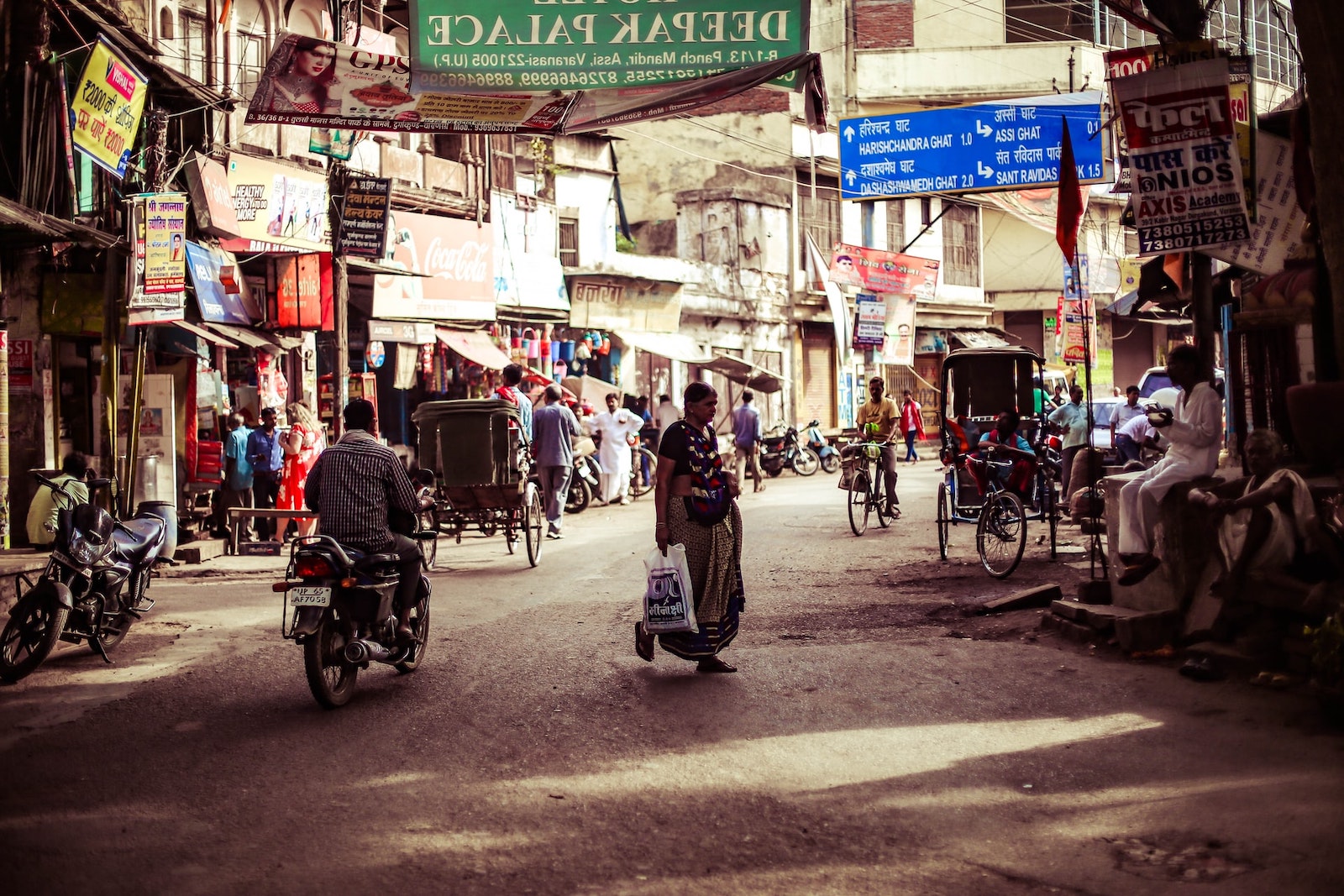
by DGR News Service | Oct 23, 2020 | Male Supremacy, Rape Culture
In this piece (cross-posted from Counterpunch), Cesar Chelala connects the increase in rapes with the sex-based violence women face in India.
by Cesar Chelala / Counterpunch
It is difficult to reconcile India’s rapid economic and technological development with brutal practices that, in many cases, lead to the death of women and girls. Repeated incidents of gang rape in India are not isolated, but reflect widespread gender and caste discrimination in the country. Today, rape is the fourth most common crime against women in India.
Two recent gang rapes resulting in the deaths of Dalit women have shocked people around the world. Both women were young, one 19 and the other 22-years-old.
In India, 200 million Dalits face discrimination and abuse.
According to women rights’ activists, this is a situation that has increased during the coronavirus pandemic. There are no signs that crimes against women and girls are abating.
One of the earliest and most brutal manifestation of violence against women is female feticide, where female fetuses are selectively aborted after pre-natal sex determination. Researchers for The Lancet estimate that more than 500,000 girls are lost annually through sex selective abortions. Female fetuses are selectively aborted after pre-natal sex determination. Sometimes, the elimination of girls occurs after they are born, a situation of female infanticide that has existed for centuries in India.
One of the consequences of female feticide is the increase in human trafficking. According to some estimates, in 15,000 Indian women were sold as brides in 2011 to regions such as Haryana and Punjab to compensate for the lack of women as a result of feticide. While women in the Vedic age (1500-1000 BC), and some even now, were worshipped as gods, in modern times some are negated the basic right to life.
Feticide began in the early 1990s, when ultrasound techniques became widely used in India. Many families continue to have children until a male child is born, since boys are valued more than girls. Religious practices for their parent’s afterlife can only be performed by males, which makes them an additional status symbol for their families.
The Preconception and Prenatal Diagnostic Techniques (PCPNDT) Act, passed in 1994, making selective abortion illegal, has been poorly enforced. In 2003, the PCPNDT was modified holding medical professionals legally responsible for abuse of the test. These provisions, however, have not significantly deterred their abuse.
Although gender-based discrimination against women and girls is pervasive in developing countries, India is one of the worst culprits. Female discrimination, which starts in the womb, continues throughout women’s lives.
A survey by the Thomas Reuters Foundation found that India is the fourth most dangerous place in the world for women.
In India, violence against women can take several forms. Women of any class or religion can be victims of acid-throwing, a cruel form of punishment that can disfigure women for life and even kill them. According to perpetrators’ testimonies, they do it to put women in their place for defying cultural norms. The U.N. Population Fund reports that up to 70 percent of married women aged 15-49 in India are victims of beatings or coerced sex.
Dowry traditions, in which parents must often pay large sums of money to marry off their daughters is claimed as one of the reasons why parents prefer boys to girls. In 1961, the Government of India passed the Dowry Prohibition Act, which makes dowry demands in wedding arrangements illegal. Although some kinds of abuse such as “bride burning” have diminished among educated urban populations, many cases of dowry-related domestic violence, suicide and murders are still occurring.
Rapes of women in India are not isolated incidents. They are actually symptoms of a discrimination that starts in the womb, in a society that persists in treating women as second-class citizens. Abuse of women in India will only be solved by changing entrenched cultural norms that continue to condone the abuse and degradation of women. Until the rights of all women and girls, regardless of caste, are accepted by Indian society, and appropriate laws are enforced, any measures to overcome this situation will only be palliative, and will not solve this most serious problem.
Dr. Cesar Chelala is a co-winner of the 1979 Overseas Press Club of America award for the article “Missing or Disappeared in Argentina: The Desperate Search for Thousands of Abducted Victims.”







